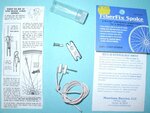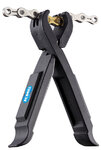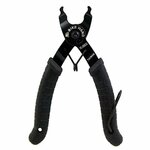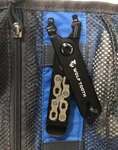I've been working on our repair kit for our trip. Thanks in no small part to Mr. Coffee's post at
https://electricbikereview.com/forums/threads/tools-for-field-repairs.32350/ I've tried out a couple of new items. Here are my observations on an item you might want to consider:
FiberFix EmergencyUniversal Spoke Replacement Kit
Manufactured by Morrison-Barrios LLC in Tucson, AZ, this very compact kit is a universal spoke replacement that has 5-star ratings just about everywhere it's sold. The FiberFix replacement spoke consists of a flexible aramid (Kevlar) cord that loops through the empty spoke hole in your hub and is then tensioned with the included hardware and tool to bring the wheel back into true. A spare spoke nipple is also included in the vial sized kit. Barring any serious abrasion where the cord passes through the hub, this kit should be reusable a number of times.
Here's a pretty good install video:
.
I had a broken spoke on my mechanical some years ago. We were maybe 15 miles from our trail head on Lake Tahoe's West Shore trail. I wrapped the broken spoke to an adjacent one thinking I could ride back. Nope. Within a mile or two the wheel was too out of true to clear the rim brake pads (yep, I still use these). Luckily there's a trolly that shuttles people along the west shore. It even has a bike rack. We found the nearest stop, loaded our bikes and were shuttled back for a few $. Better than walking, but it still cut this beautiful ride way too short. Wish I'd had this reapir spoke then! I'll always have it now.
It retails for ~$15 but can be found for less on Ebay, etc.
Cycle on. Be safe, be healthy.
View attachment 49236
View attachment 49237 View attachment 49238

www.westernbikeworks.com






